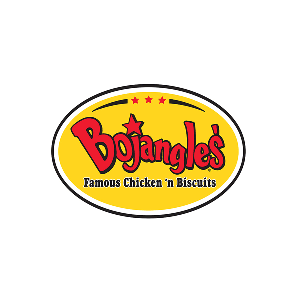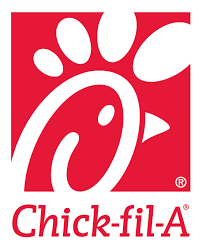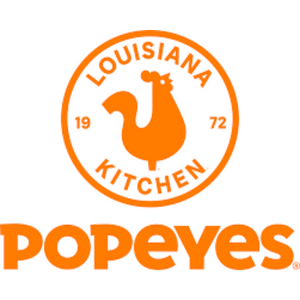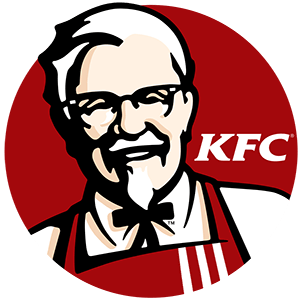Bojangles Franchise in 2025: Costs, Fee & FDD
Discover why Bojangles’ Famous Chicken ‘n Biscuits is a beloved Southern franchise with strong growth potential. Learn about the investment costs, earnings, and the robust support system that sets it apart in the competitive quick-service industry.
Table of Contents:
Bojangle’s Famous Chicken ‘n Biscuits, founded in 1977 by Jack Fulk and Richard Thomas in Charlotte, North Carolina, has carved out a distinctive niche in the quick-service restaurant industry. Known for its Southern-inspired menu, Bojangles quickly became a beloved brand in the Southeast, where its flavorful, made-from-scratch biscuits and perfectly seasoned fried chicken resonated with the local palate. The franchise has grown significantly over the years, becoming a cultural icon in the regions it serves.
At the heart of Bojangles menu are its legendary fried chicken and biscuits, which are complemented by a variety of Southern sides, including dirty rice, Cajun pinto beans, and seasoned fries. The brand is also famous for its sweet tea, brewed fresh every day. Bojangles appeals primarily to customers who appreciate the unique flavors of Southern comfort food, including families, busy professionals, and anyone looking for a quick yet satisfying meal. Their core market is the Southeastern United States, though their appeal is expanding as the brand grows.
Today, Bojangles operates over 800 locations across 14 states in the U.S., with a strong concentration in the Southeast. The franchise continues to expand, tapping into the growing demand for regional cuisine nationwide. Bojangles serves millions of customers each year, with some locations drawing hundreds of visitors daily. The brand’s commitment to quality and consistency has helped it maintain a strong, loyal customer base.
Franchisees benefit from a robust support system that includes comprehensive training programs, operational support, and marketing assistance. Bojangles offers extensive training to ensure franchisees can replicate the brand’s success, including on-site training at established locations and ongoing support through regional teams. The franchise also provides tools for local marketing and access to a supply chain that ensures quality ingredients. Overall, Bojangles positions its franchisees for success with a well-rounded support system and a brand that continues to grow in popularity.
Bojangles Franchise Insights
- Founded in 1977 and franchising since 1978, Bojangles has over four decades of experience, providing a well-established brand and system for new franchisees to leverage.
- With 528 franchised units out of 813 total U.S. locations, Bojangles has a strong franchise presence, reflecting a robust system that supports franchisees effectively.
- Bojangles locations typically see higher average unit volumes (AUVs) compared to other regional competitors, with some restaurants generating upwards of $2 million annually.
Bojangles Franchise Key indicators
Unit Growth YOY (%)
5%
vs industry 1%
Total U.S. Franchised Units
528
3-Year Failure Rate
5%
vs industry 11%
Sales-to-Investment ratio
0.9:1
How much does it cost to open a Bojangles franchise?
Understanding the potential investment size and capital requirements is crucial when considering opening a Bojangles franchise. These financial commitments, including initial franchise fees, equipment costs, and ongoing operational expenses, impact the feasibility and profitability of the venture. Thoroughly evaluating these factors ensures that potential franchisees are prepared for the financial responsibilities and can make informed decisions about their ability to sustain and grow the business, ultimately contributing to long-term success.
Min & Max Investment
Opening a Bojangles franchise involves several key costs, which are outlined in Item 7 of the Franchise Disclosure Document (FDD). You can see a breakdown of the costs to open a Bojangles below from the most recent Item 7 below:
| Type of Expenditure | Minimum Investment | Maximum Investment |
|---|---|---|
| Franchise Fee | $35,000 | $35,000 |
| Insurance | $5,000 | $15,000 |
| Pre-opening salaries, travel, living expenses | $100,000 | $160,000 |
| Site Selection | $100 | $10,000 |
| Building | $1,100,000 | $1,300,000 |
| Site Work | $625,000 | $1,135,000 |
| Soft Costs | $140,000 | $200,000 |
| Equipment, furniture, signage, and fixtures | $550,000 | $690,000 |
| Initial Inventory | $15,000 | $32,000 |
| Utility Deposits & Business Licenses | $220 | $21,700 |
| Additional Funds (3 months initial phase) | $30,000 | $181,000 |
| Total | $2,600,320 | $3,779,700 |
Item 7 in the Franchise Disclosure Document (FDD) is the “Estimated Initial Investment” section. It outlines the total costs a franchisee can expect to incur when starting a franchise, including the initial franchise fee, equipment, inventory, real estate, and other startup expenses. This section is crucial because it provides potential franchisees with a detailed understanding of the financial commitment required, helping them assess affordability and plan their investment strategy effectively.
Required Capital
Based on the data provided and industry standards for similar quick-service restaurant franchises, here’s what you can expect:
- Initial Investment The total estimated initial investment ranges from $2,600,320 to $3,779,700. This includes costs such as the franchise fee, insurance, equipment, initial inventory, and additional funds for initial operating expenses. Assuming that you will finance your franchise investment, you should plan to have 20% of the total investment amount in the form of equity (cash) for the investment.
- Liquid Assets While the exact liquid asset requirement isn’t provided, it is common in the industry for franchises of this scale to require liquid assets ranging from $500,000 to $1 million. This ensures that franchisees have enough cash on hand to manage operating costs during the initial months of business.
- Net Worth Typically, franchises like Bojangles may require a net worth of around $2 million or more. This estimate is based on the need for franchisees to demonstrate financial stability and the ability to secure financing if needed.
These figures are general estimates based on industry standards, and the exact requirements can vary depending on the specific location and market conditions. It’s always recommended to discuss these financial requirements directly with the franchisor for the most accurate and up-to-date information.
How much does a Bojangles franchise owner make?
Calculating the salary of a Bojangles franchise owner involves analyzing gross sales to determine total revenue, assessing operational efficiency to understand profit margins, and accounting for franchisor fees and additional expenses such as rent, utilities, and payroll. Effective management of these factors can significantly impact the profitability and financial success of a Bojangles franchise owner. This comprehensive financial analysis helps estimate net profits, from which the owner’s salary can be derived. A clear understanding of these factors ensures accurate salary projections and financial planning for sustainable business operations.
Bojangles Revenue & Gross Sales
Based on most recent analysis, Bojangles franchises achieved a median gross sales of $2,058,526, reflecting a 8% increase from the previous year. This strong financial performance underscores the brand’s robust consumer demand and potential for significant revenue generation.
Which key factors impact the average revenue performance of Bojangles franchisees?
The stabilization of U.S. franchisee median gross sales revenue for Bojangles can likely be attributed to a few key factors. First, the continued popularity of quick-service restaurants, especially those offering comfort food like fried chicken and biscuits, likely helped maintain steady customer demand. Additionally, Bojangles commitment to quality and consistency in its core products may have contributed to sustaining loyal customer bases across its locations. Economic conditions, such as inflation and shifts in consumer spending habits, could have also played a role, balancing out any potential declines with consistent sales from regular customers. Lastly, effective marketing strategies and operational support from the franchisor likely helped franchisees maintain stable revenue performance during this period.
Bojangles Franchise Operational Costs
When opening a Bojangles franchise, the key primary ongoing operational costs you should consider include:
- Labor Costs Staffing is a significant expense, including wages, benefits, and payroll taxes for your team of managers, cooks, and service staff. Given the quick-service nature, maintaining efficient staffing levels while ensuring quality service is crucial.
- Food and Supply Costs The cost of ingredients, including chicken, biscuits, sides, and beverages, will be a substantial part of your ongoing expenses. Additionally, you’ll need to account for packaging, cleaning supplies, and other consumables.
- Utilities Running a restaurant requires a significant amount of electricity, water, gas, and waste management. These costs can vary depending on the size of your location and local rates.
- Lease or Mortgage Payments Depending on whether you lease or own the property, monthly payments for your location will be a major fixed cost. This includes rent, property taxes, and insurance.
- Maintenance and Repairs Regular upkeep of kitchen equipment, HVAC systems, and the overall restaurant environment is essential to avoid downtime and ensure a high-quality customer experience.
- Technology and Point-of-Sale Systems Ongoing costs related to software updates, hardware maintenance, and possibly subscription fees for your POS systems are also important to consider.
These costs will vary depending on your location, the size of your restaurant, and local economic conditions, but they are essential factors in managing a successful Bojangles franchise.
Bojangles Franchise Fees
Owning a Bojangles franchise is different from owning an independent, non-franchised business. All franchises tend to charge ongoing fees that franchisees are required to pay to operate. Bojangles requires their franchisees to pay the below fees:
- Royalty Fee This is a monthly fee paid to Bojangles, typically calculated as a percentage of gross sales. For Bojangles, this fee is 4% of the restaurant’s monthly gross sales.
- Marketing fund Franchisees are required to contribute to a marketing fund, wich is 1% of the total monthly gross sales.
- Local Marketing Expenditure This expenditure represents the 3% of total monthly Gross Sales less amounts spent on cooperative advertising.
- Additional Fees There are additional fees for training programs, technology, and other items provided by Bojangles that may be applied.
These ongoing fees are essential to consider when planning the financial aspects of owning and operating a Bojangles franchise. They cover the costs of brand support, advertising, and ongoing operational assistance provided by Bojangles.
Bojangles Franchise Earnings
The earnings of a Bojangles franchise owner can vary significantly based on factors such as location, sales volume, operational efficiency, and cost management. However, on average, Bojangles franchise owners can earn a substantial income.
Bojangles franchisees an average gross sales of $2,058,526. Based on this average gross sales figure, we estimate that a Bojangles franchisee makes approximately $308,779 in earnings per year, assuming that the franchisee is an owner-operator.
How to Open a Bojangles Franchise
Becoming a Bojangles franchisee involves a multi-step process that ensures both the franchisor and the potential franchisee are well-prepared for a successful partnership. Here’s an overview of the process:
- Initial Inquiry You or your franchise specialist submits an initial inquiry basic information about your interest and background. You should also conduct thorough research on the franchise, including seeing all of the information available on the Vetted Biz franchise intelligence platform, including access to the most recent Franchise Disclosure Document (FDD).
- Discovery Day After reviewing the FDD, you’ll likely be invited to a Discovery Day. This is an opportunity for you to visit the Bojangles headquarters, meet the executive team, and get a closer look at the brand’s operations. It’s also a chance for the franchisor to evaluate your fit with the brand.
- Franchise Agreement If both parties are satisfied after Discovery Day, you’ll be offered a Franchise Agreement. This legal document outlines the terms and conditions of your franchise relationship, including your rights and responsibilities. Once signed, you will officially become a Bojangles franchisee.
- Financing and Site Selection With the agreement in place, you’ll need to secure financing for your franchise. Bojangles may provide guidance on obtaining loans or financing options. Concurrently, you’ll work with the franchise’s real estate team to select and secure a suitable location for your restaurant.
- Training and Pre-Opening Bojangles offers an extensive training program to ensure you are well-prepared to operate your franchise. Training typically includes both classroom instruction and hands-on experience at an existing Bojangles location. During this time, you’ll also oversee the build-out of your restaurant, including construction, interior design, and equipment installation.
- Grand Opening Once training is complete and your restaurant is ready, you’ll work with Bojangles marketing team to plan and execute your grand opening. This event is crucial for generating initial customer interest and building momentum in your new market.
- Ongoing Operations After the grand opening, you will begin day-to-day operations, with ongoing support from Bojangles in areas like marketing, supply chain management, and operational efficiency. Regular communication with your franchise support team will help ensure your franchise is successful and aligned with the brand’s standards.
By following these steps, you’ll transition from an interested entrepreneur to a full-fledged Bojangles franchise owner, ready to serve your community and grow your business.
Pros & Cons
Pros
Established Brand: Bojangles has a strong brand presence, especially in the Southeastern U.S., with a loyal customer base and decades of operational experience since its founding in 1977.
Growing Market: The quick-service restaurant industry, particularly in the comfort food segment, continues to show resilience and growth, providing a stable market for Bojangles franchises.
Strong Franchise Network: With over 528 franchised units in the U.S., Bojangles has a well-established franchise system, indicating a successful model that has been replicated many times.
Cons
High Initial Investment: The required initial investment, ranging from $2.6M to $3.78M, is substantial, which may pose a barrier to entry for some potential franchisees and could result in a longer time to recoup your investment.
Limited Geographic Appeal: Bojangles has a strong regional presence in the Southeast, but its appeal may be less strong in other parts of the country, potentially limiting expansion opportunities outside its core markets.
Competition: The quick-service restaurant industry is highly competitive, with numerous established players. Competing against well-known brands like Chick-fil-A or Popeyes may require significant marketing and operational efforts.
Operational Demands: As a restaurant franchise, Bojangles requires intensive day-to-day management, including staffing, food safety, and customer service, which can be demanding for owner-operators, especially those new to the industry.




